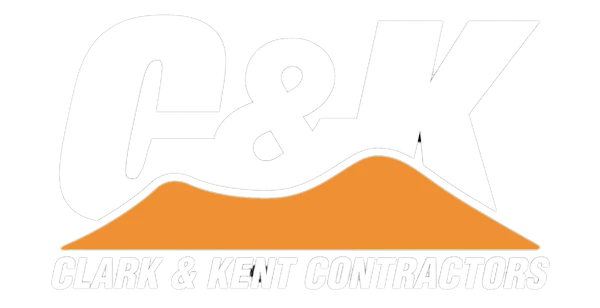Driveway and patio drainage
Tips on drive and patio drainage
Drives, patios and paths should always be built on a slope to ensure that surface water drains away quickly and efficiently. In many instances, surface water can be allowed to drain from a driveway or patio into surrounding soil, planted garden or lawn.
But there are many situations in which this is not adequate, notably if there is a large surface area to the drive or patio, in areas of high rainfall or when surrounding soil is heavy clay or liable to waterlogging.
In these situations, it makes sense to use drainage channels to collect surplus surface water and direct it away to a suitable dispersal point such as a water drain or soakaway.
Installing drainage channels
It is often sensible to install some sort of drainage channel in any driveway or patio laying scheme. This will ensure the path, patio or drive stays free of surface water build-up in any conditions, even in fierce thunderstorms.
Creating a driveway drainage channel is a relatively simple DIY operation but, if you want a professional job done properly then it is best to call in the experts like Clark and Kent Contractors.
Clark & Kent has years of experience as a land drainage contractor with expert staff who have worked on all manner of drainage projects, from domestic driveway drain to large-scale land drainage projects for some of the UK's biggest blue-chip companies.
Ways to build a drainage channel
One of the easiest ways to create a driveway or patio drain channel is to use a moulded concrete strip. The concrete can be pre-formed or made on site using a length of plastic guttering as a template.
If the patio or driveway is paved ensure the channel fits in the centre with the paving stones sloped towards the channel with a fall of one in 80. To create a concrete channel in-situ simply lay a length of timber parallel to the paving and slightly wider than the plastic guttering.
The timber should lie at right angles to the slope of the slabs with a fall of one in 80 and be secured by hammering wooden pegs into the ground at regular intervals. Use an aggregate cement mix of four to one for the concrete and fill the channel to 10mm below the paving. While the concrete is still wet, press the guttering firmly into it, rocking gently from side to side to leave a clear, smooth imprint.
Use a spirit level to check the fall is correct then remove the guttering and make good by smoothing the edges so they fit flush with the paving slabs. An alternative to concrete is a pre-formed plastic drainage channel. It should be embedded firmly in concrete though to keep it in place.
A special waterproof sealant can be used to join sections together and the space between the channels and paving filled with dry mortar then watered with a gentle spray. It can be useful to cover patio and driveway drainage channels with a metal or plastic grille. They look more attractive and can prevent water channels from getting clogged up with leaves and other debris.
Digging a land drain
Sometimes it is necessary to carry the water away to a water drain or soakaway. Before digging a land drain first make sure there is somewhere for the water to go or you risk solving one problem only to create another.
Rainwater should not be diverted to the mains sewage system but only to a water drain or soaraway. It's a good idea to check with your local authority on regulations surrounding soakaways. To build a land drain cut a trench about a metre deep and 350mm wide with a fall of one in 80 to the desired outlet.
A mini digger is ideal for this job and can be fired from Clark & Kent as self-drive or with a trained operator. Using a trained operator may seem more expensive but remember that an experienced driver will get the work done much more efficiently.
The trench bottom should be lined with permeable geotextile fabric and 75mm of clean aggregate to create a bed for a 100mm diameter perforated plastic drain pipe. One the drainage pipe sits firmly with the correct fall fill in the trench with more aggregate to about 250mm below ground level. Top with more geotextile fabric and than cover with soil.
Creating a soakaway
Soakaways are ideal for getting rid of surface rainwater diverted from drainage channels and land drains. Simple soakaways are not used for household drainage or sewage and they should never flow into the mains sewerage system. Preformed concrete soakaways are available from builders' merchants. They usually come with a manhole cover and a geotextile membrane to keep out surrounding soil and allow water to drain away.
A cheaper solution is to dig a simple soakaway yourself. Make the hole about 1.2m in all directions and break up any clay at the base of the hole. Line the bottom and sides with geotextile fabric and lay a rainwater pipe from the land drain into the hole. Take care to include a gully trap at the highest end of the pipe to allow access should it get clogged and need cleaning.
Fill the hole with clean aggregate to within 30cm of ground level. The aggregate should be larger than normal, at least 40mm round. Cover the whole lot with geotextile fabric and fill in with topsoil.
Regulations on driveway drainage
Since 2008 planning permission from the local authority is needed for new or replacement driveways of gravel or some other porous material or when rainwater is directed to a purpose-built soakaway.
Impermeable driveways or more than five meters square also need planning permission if they are extended and do not have a drainage system to take care of surplus rainwater. Reputable land drainage contractors will factor in the provision of a proper drainage system when quoting for laying a driveway or building a patio.
Unwary homeowners may be enticed by cheap quotes into laying driveways that fail to comply with regulations but they run the risk not only of flooding but fitting the bill for proper drainage. Contractors who install driveways and patios to British Standards should be able to provide permeable paving, sustainable drainage systems and adequate soakaways.
The public should be wary of driveway installation contractor who fails to mention drainage requirements for your driveway or patio project. Many solutions are available that meet the regulations including permeable paving, rainwater harvesting systems, porous asphalt and controlled surface water run-off into a purpose-built 'rain garden' or soakaway.
But drainage things to consider before installing a driveway or patio are the slope of the land, underground services such as water pipes and power cables, and the soil type including the possibility of contaminated soil.
Clark & Kent Contractors are specialists in drive and patio drainage. Contact us now on 01630 672329.
Clark&Kent Services Hire
Providing quality specialist plant hire equipment for construction services


